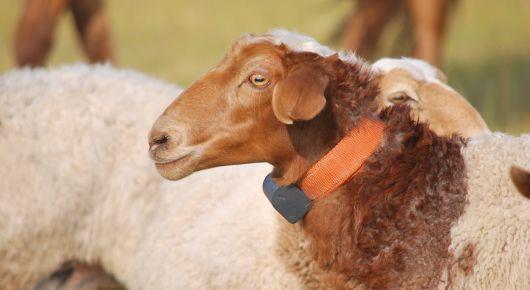Using GPS, FAO to track herds in Mongolia to help monitor infectious diseases

Live animal movement is a major cause of the introduction or dissemination of livestock and wildlife infectious diseases, whether through local and international trade-related transportation or through traditional herd movement. Understanding animal movement can greatly assist veterinary services in controlling the spread of infectious diseases.
An FAO pilot project conducted in the Khotont soum (district) of the Arkhangai Province of Mongolia aims at testing the feasibility of using GPS tracking technology in the nomadic Mongolian context. The ultimate aim is to characterize herd movements and the patterns of interaction among herds throughout the year, while surveying information regarding key herd management and husbandry practices during the seasonal mobility.
The GPS data could also assist in the better understanding of pasture and water usage and sharing mechanisms among neighbouring herds.
In Mongolia, the patterns of contacts among herds are a key determinant for infectious disease spread, and this knowledge is key to clearly understanding the epidemiology of infectious diseases that affect livestock and wildlife, along with the diseases’ impacts and routes and rates of transmission. Enhancing this knowledge can greatly help veterinary services to closely assess the risk pathways for disease transmission and thereafter develop risk-based disease management approaches.
“Pastoralism is an important part of Mongolia’s cultural heritage,” said Eran Raizman, FAO senior animal health officer. “Pastoralists constitute a third of Mongolia’s population; it provides livelihood for many.”
The nomadic seasonal movements vary several times throughout the year, including circular roaming or progressive relocation of camps and even migration to new regions. In addition to these long-distance moves, daily mobility routines are characterized by grazing and resting daily cycles, in which various herds from different camps can simultaneously use the same pasture.
In early August, six lightweight GPS collars were deployed on six different small ruminant herds at their summer pasture locations, and a preliminary survey was conducted with the six herds’ households. The GPS units host an onboard backup data storage, enabling both the regular transmission of data using specialized online software and data collection through manual download at the end of the study period, once the collars have been collected.
“To test the reliability of using this technology in the extreme weather conditions of the Mongolian context,” Raizman added, “the GPS units will be recovered in summer 2020, when the identified herds will be returning to their summer pasture locations.”
During the recovery of the GPS units, a second questionnaire-based survey will be conducted with the six households.
This pilot study aims to provide evidence for the feasibility of applying epidemiological support tools for defining the risks associated with livestock movements while providing initial characterizations of seasonal and daily movement and interaction patterns and of key herd management and husbandry practices. The study also should help researchers understand the potential risks for the transmission and dissemination of infectious diseases.
21 August 2019, Ulaanbaatar, Mongolia
